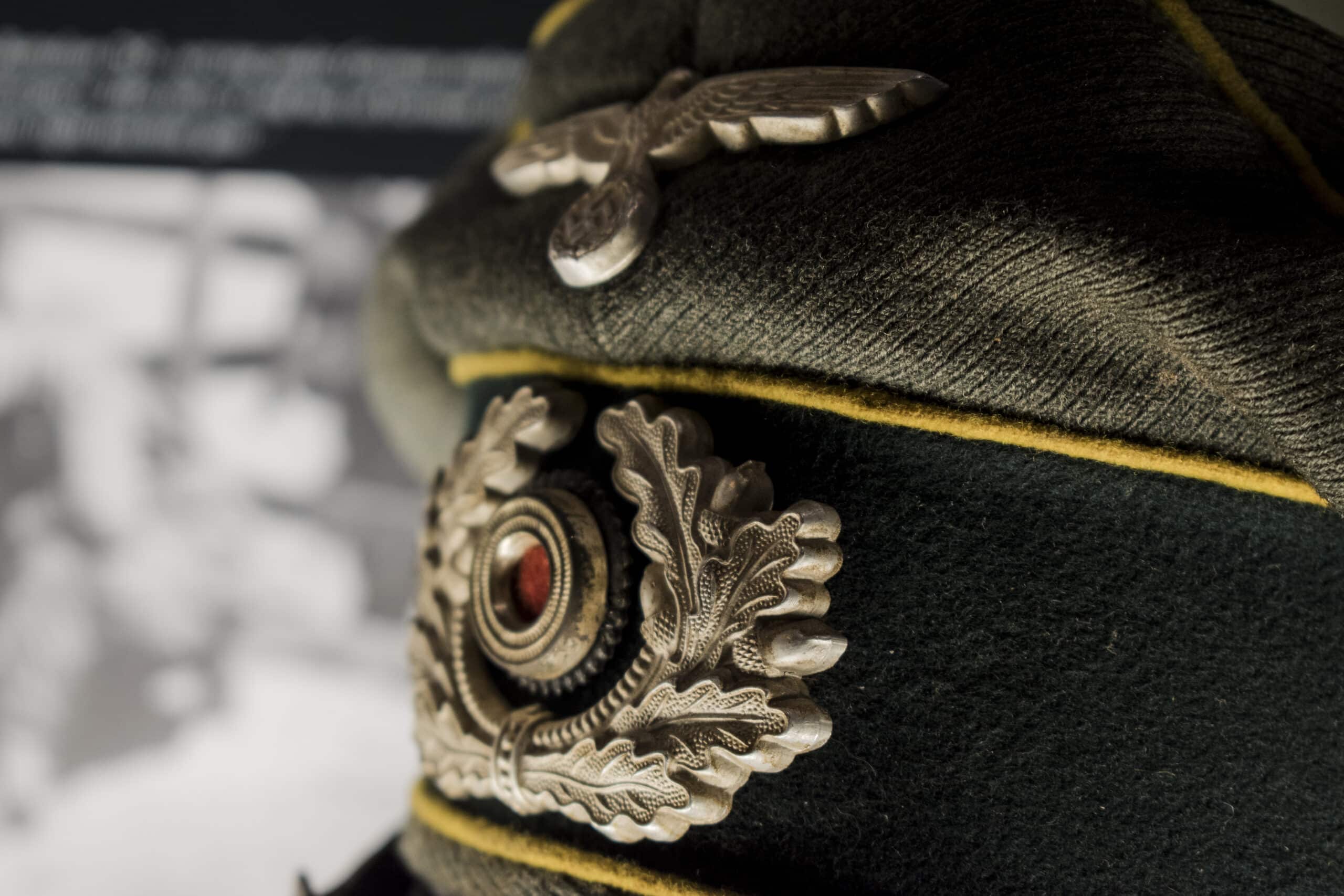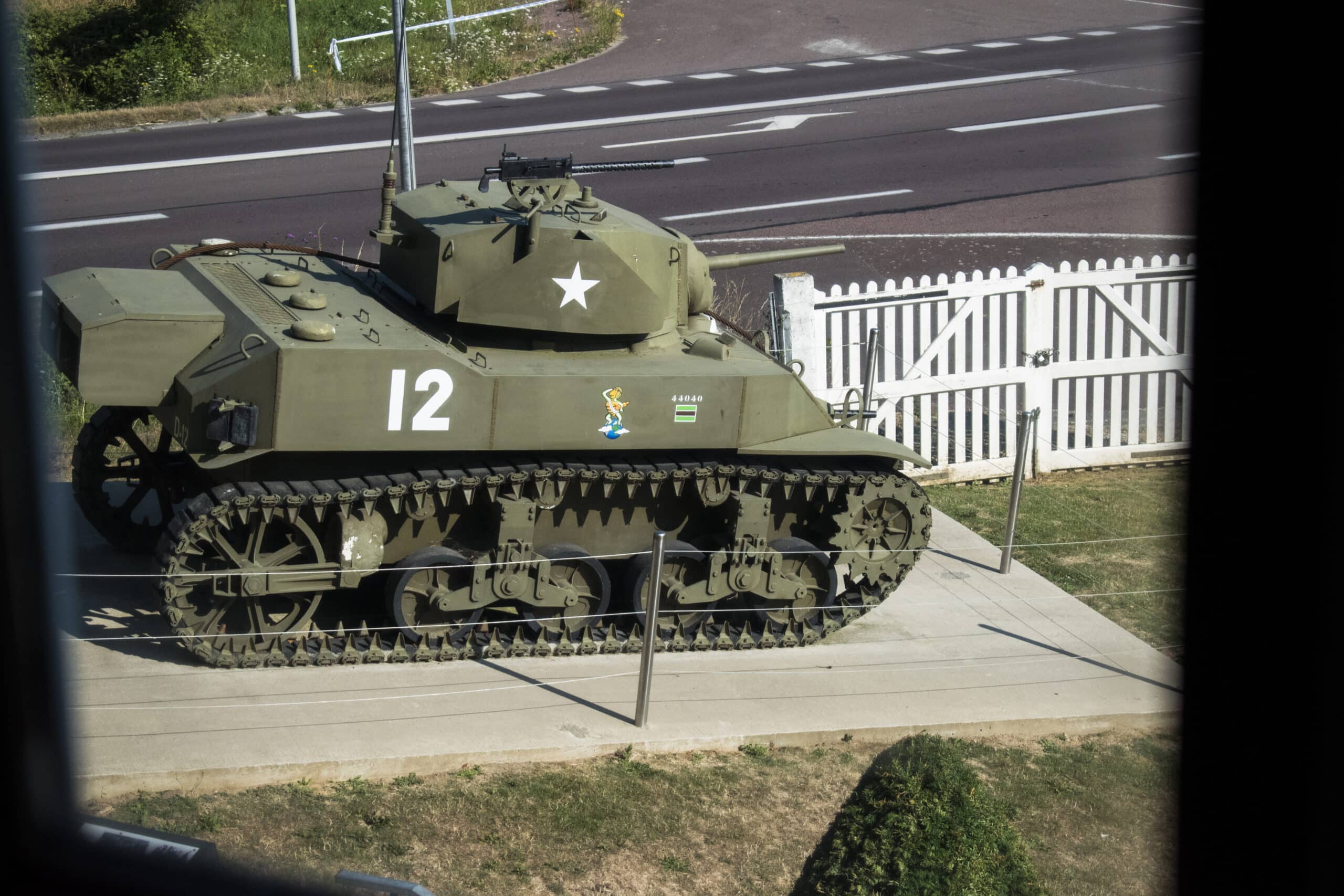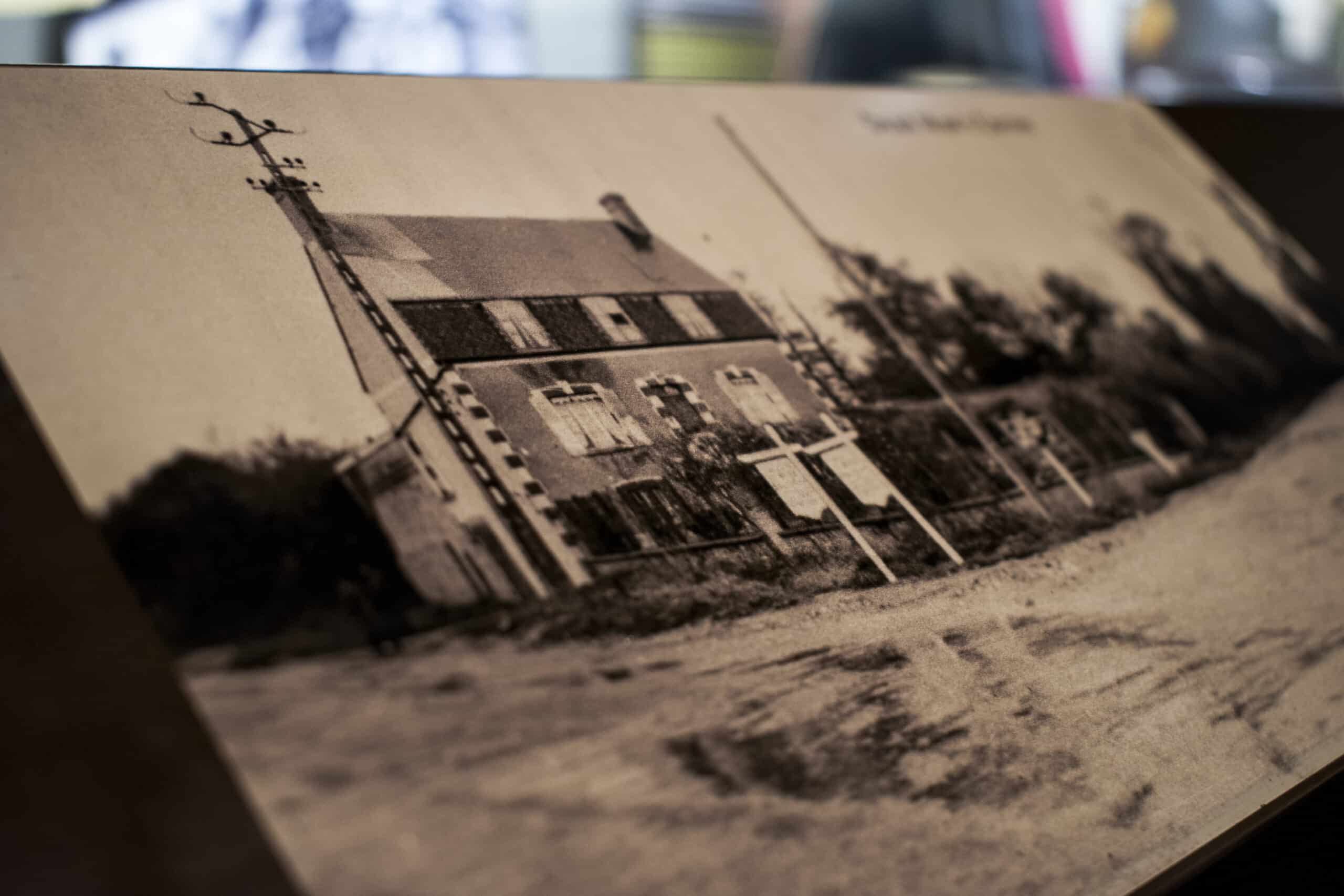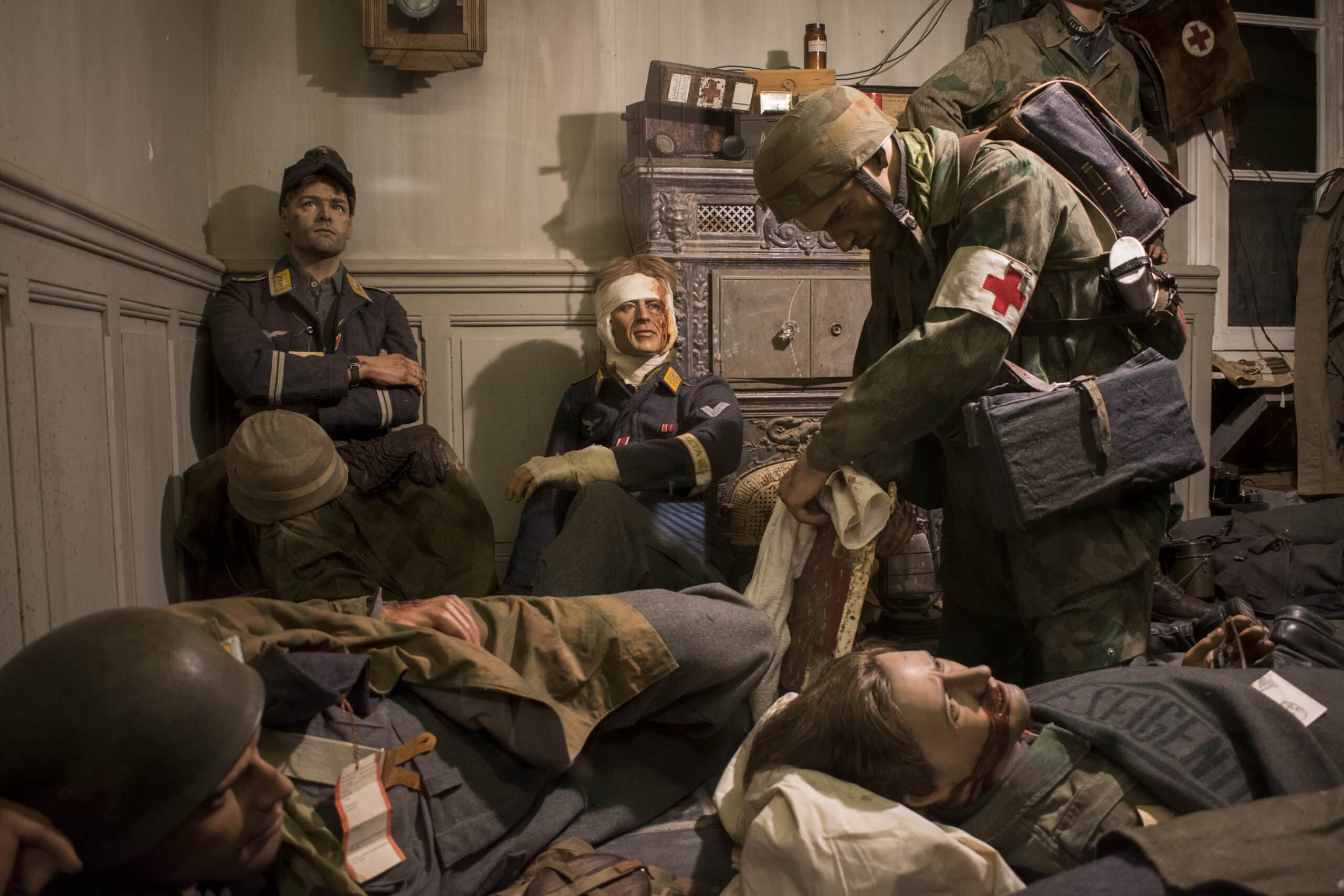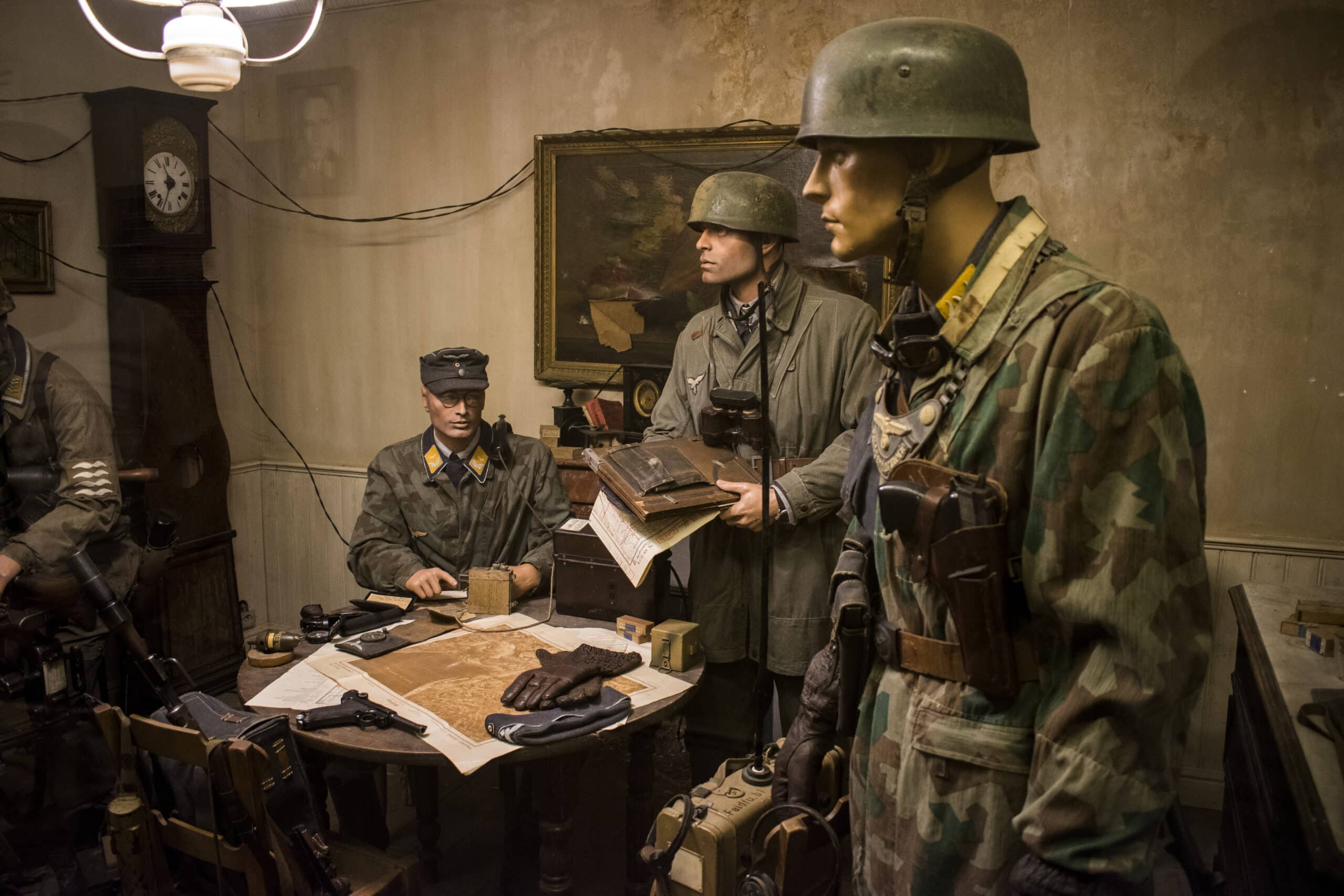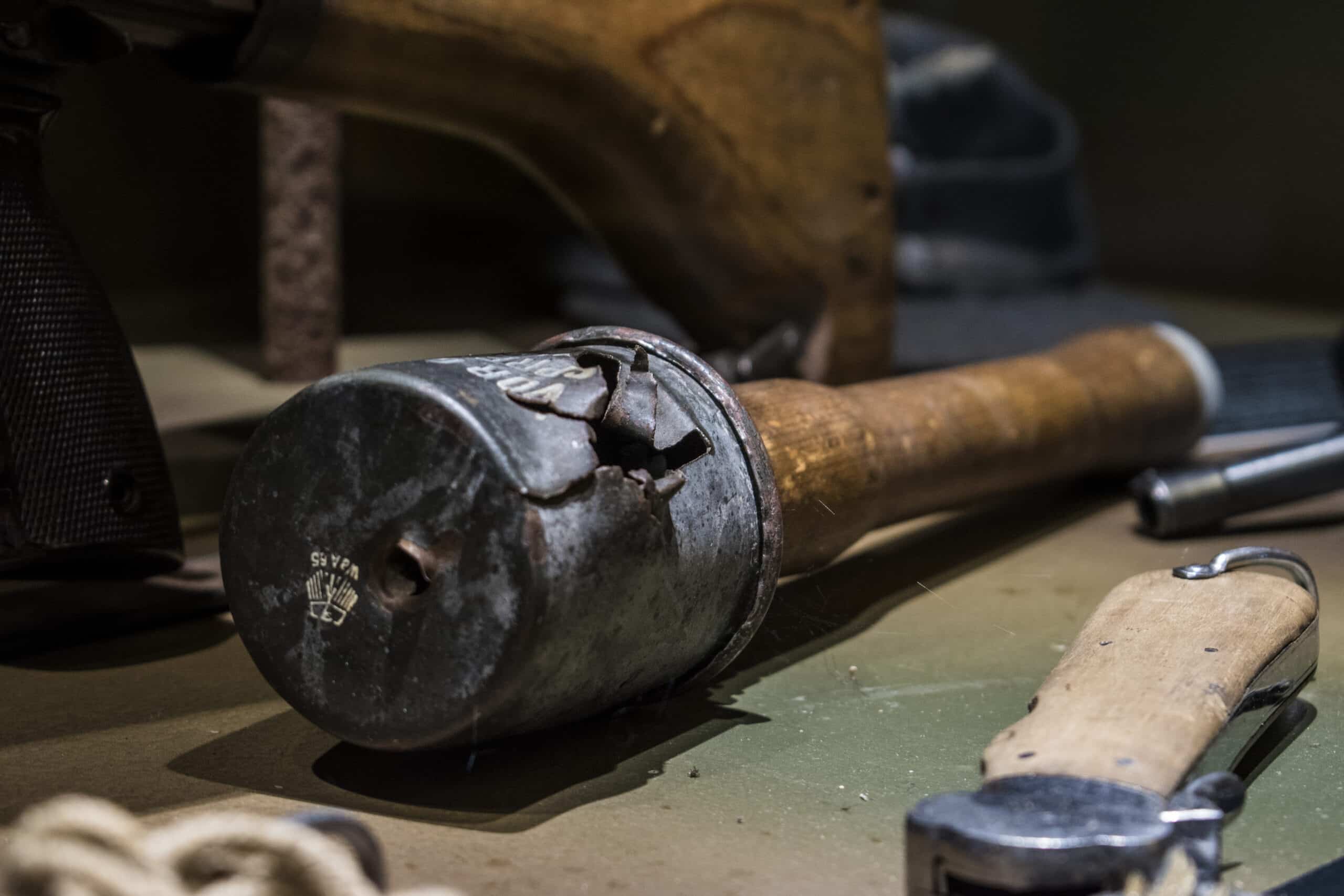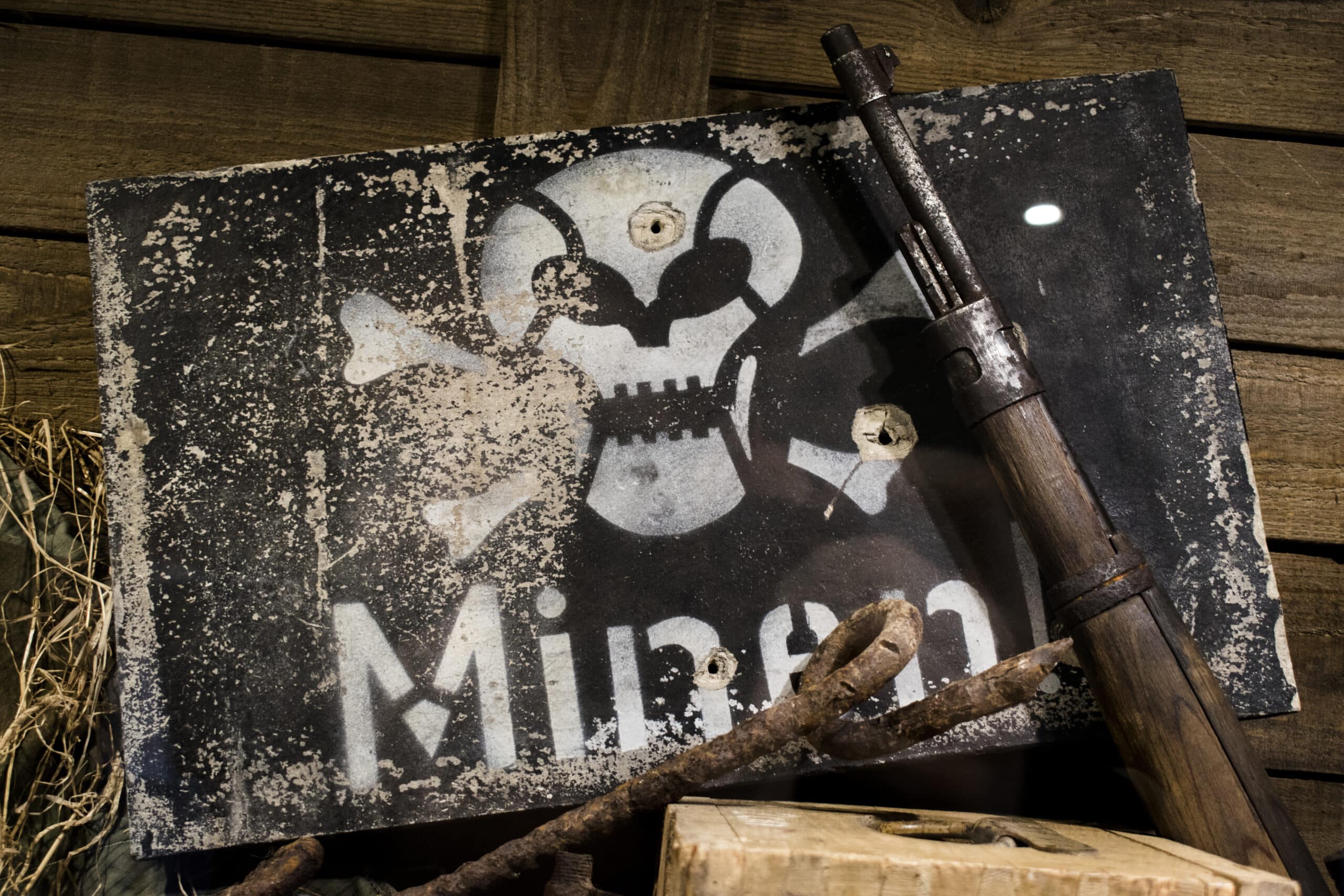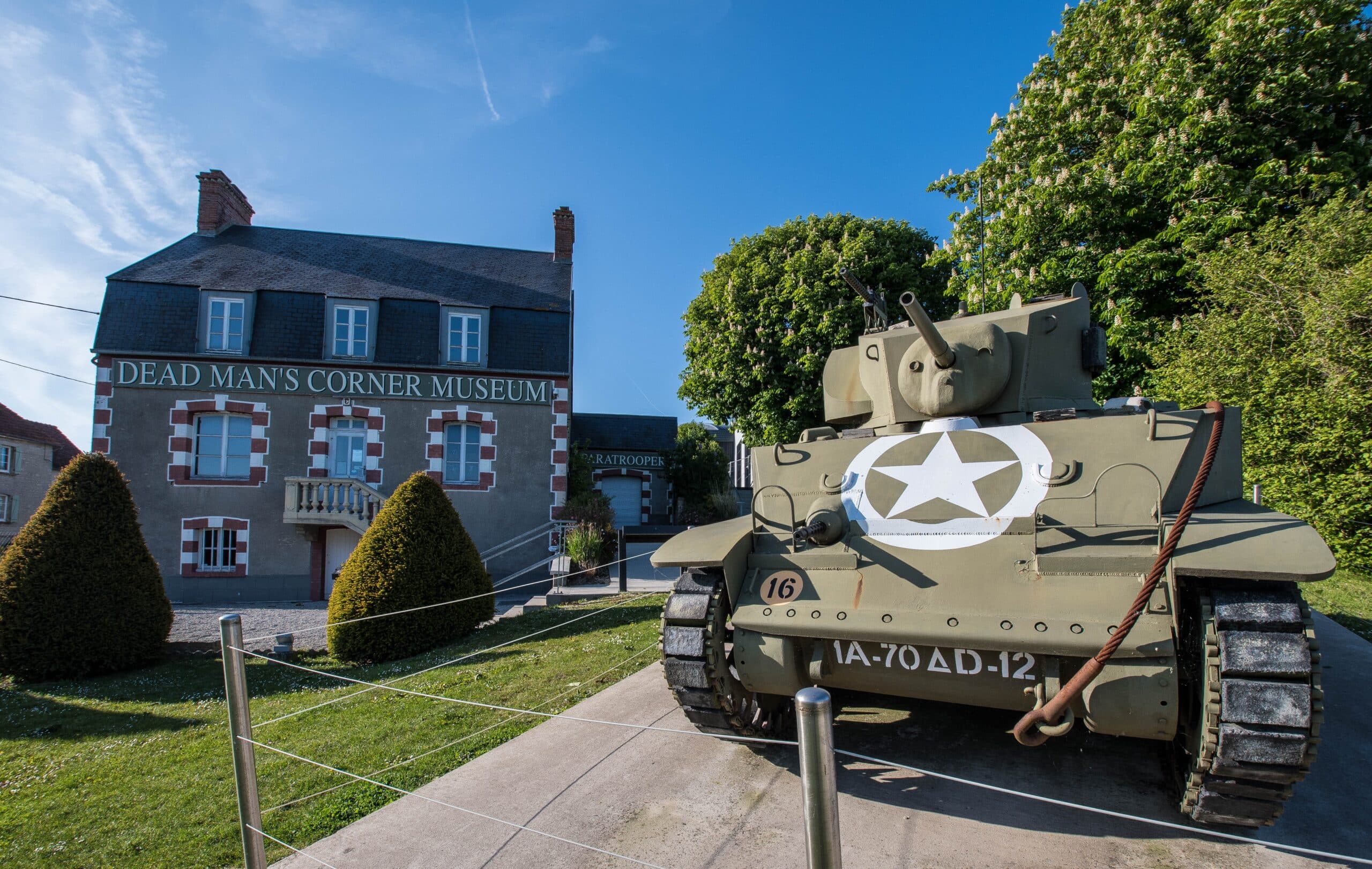
Dead Man’s Corner
Dead Man’s Corner: the historic house
The tour continues with Dead Man’s Corner, the historic house turned museum. Here, you discover the German perspective with the men of Major Von der Heydte: the fierce paratroopers of the Fallschirmjäger-Regiment 6.
The D-Day Landings Through German Eyes
Continue your visit with an immersive museum that takes you back to June 6, 1944, just as daylight begins to break. The German command post in Saint-Côme-du-Mont, at the gates of Carentan, is buzzing with activity. Orders are shouted, and the deep rumble of bombings echoes in the distance: the Americans are landing!
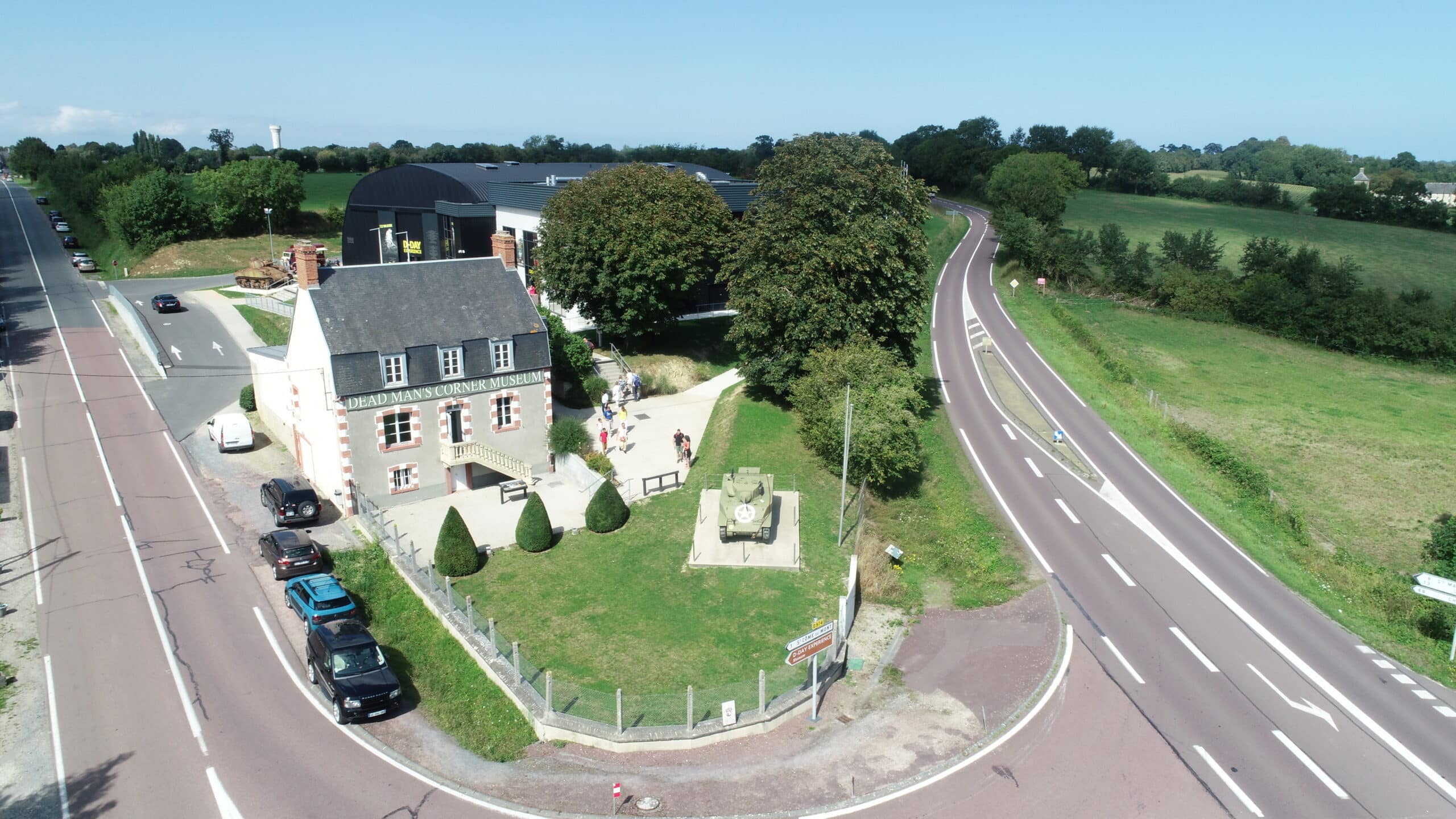
A command post and more!
After the departure of Major Von der Heydte, and while the fighting still rages on, Dr. Roos, a German doctor, sets up a field hospital in the house. Here, he treats both wounded soldiers from his own side and injured American soldiers without distinction.
On the upper floor of the house, you will also find a room dedicated to Raymond Geddes, an American soldier who was treated here. Through his personal belongings, he tells you the story of his D-Day experience. A twenty-minute film faithfully recreates his testimony.
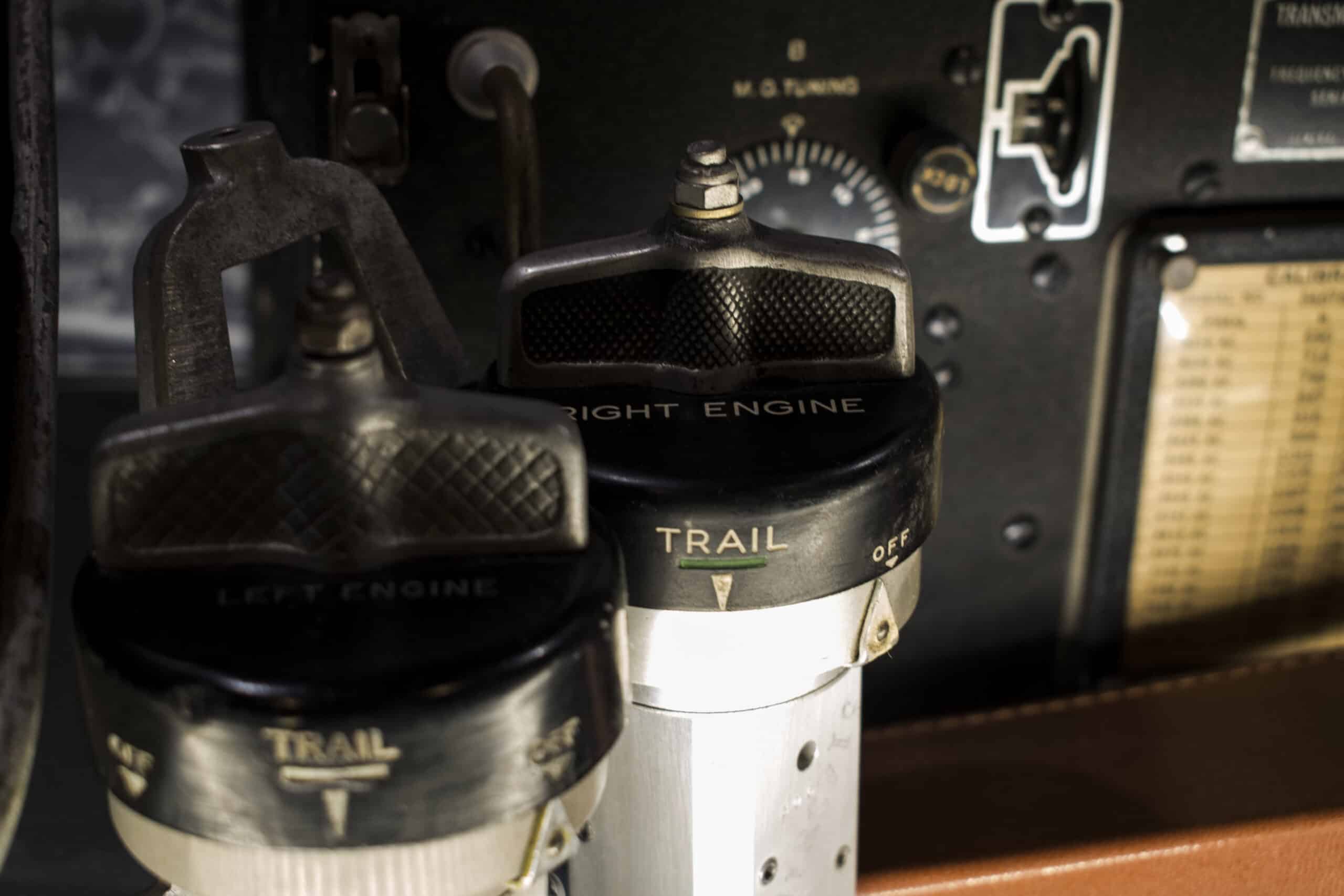
Your guide: Major Von der Heydte
In the continuation of the first part of the museum, the authentic items tell the story of their owners. Here, the spotlight is particularly on Major Von der Heydte.
Before taking command of the Fallschirmjäger-Regiment 6 in January 1944, Friedrich August Von der Heydte participated in the campaigns in Poland (1939) and France (1940). He also fought in Crete in May 1941, then in North Africa from June 1942 to February 1943 after a stint in Russia.
Promoted to Major, and despite being severely wounded in a plane crash in Italy in September 1943, he found himself in Normandy in June 1944. When the news of the D-Day landings spread, he decided to establish his command post in this house overlooking the marshes and the road leading to Carentan.
The Major and his men are now your guides to explore this historic house with detailed dioramas that reconstruct the places as they were at the time.
